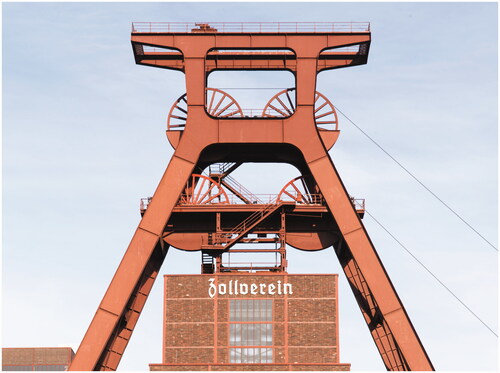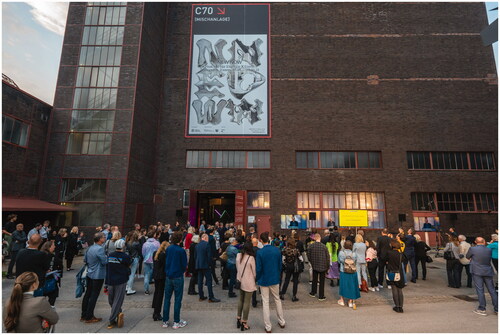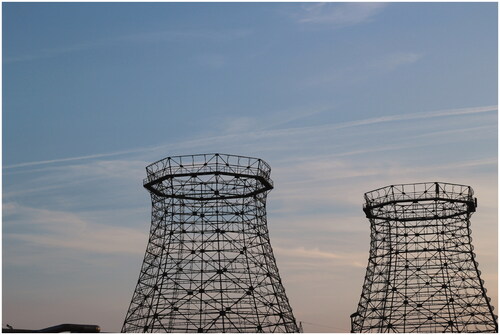Abstract
A review of the international and interdisciplinary conference Another End Is Possible during the brand-new European festival for Digital Arts NEW NOW. The review is based on my experience as an early career researcher and artist speaking at the conference, and also as a visitor of the exhibition and spectator of performances, physically (on-site) and digitally (remotely).
NEW NOW Festival presents various programmes for culture development merging different formats such as a residency, a conference, a physical and an online exhibition as well as performances. This festival is an example of good practices for art and design research future dissemination transforming the COVID-19 pandemic’s challenges as well as sustainability issues into opportunities to create stimulating and engaging new experiences beyond screens and spaces.
Introduction
NEW NOW Festival is an example of how interdisciplinary practices and research around issues related to history, health, art, design, technology and ecology can come together meaningfully in the midst of the pandemic ().
After the conference, I interviewed Vesela Stanoeva, the conference programme manager and organizer, via a Zoom call, to gain insights into the challenges and aims of the festival and the conference.
The first section introduces the festival and its different formats in relation to the context of COVID-19. The second part exposes my involvement and experience of the festival and conference. Finally, the article concludes with a discussion on good practices to inspire future interdisciplinary research dissemination ().
‘Mining ideas instead of coal’
In 2021, NEW NOW (https://newnow-festival.com/en), a new and original festival for Digital Arts in Europe, was founded. For its first iteration, it transformed the famous UNESCO historical coal mining site Zollverein in Essen, Germany into a temporary centre for contemporary culture experimentation, speculation, production, and distribution. The Mixing Plant of the Zollverein Coking Plant became the heart of the production and exhibition offering a spectacular and almost alienating space, structured by concrete and metal pipes, on a monumental scale. The purpose of the festival was twofold: It brought together international contemporary artists, pioneers, makers, and creative thinkers to explore crucial issues of our times that will forge our future while reconverting the disaffected area, signature, and relics of an industrial past, to support the local community through the arts and culture. The particularity of NOW NEW is the variety of formats of their programme. First, a three-week on-site residency for ten artists or groups of artists to create new artworks took place. The projects developed during this time were later exhibited on-site during the festival. Along with the physical exhibition, its virtual twin, ZECHE, was offering online and worldwide access to the festival and an ‘art-in-art’ experience of the place ().
Figure 3. ZECHE, screenshot of the online exhibition © Christian Mio Loclair – NEW NOW Festival, 2021.
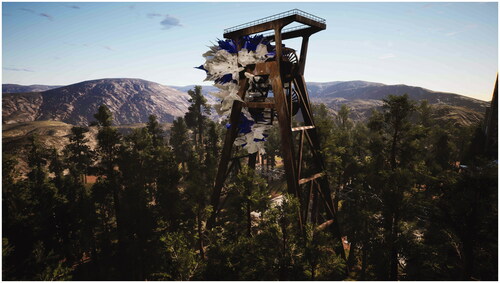
The context of the festival's creation depended on the uncertainty due to COVID-19's ever-changing restrictions. Stanoeva expressed to me the complexity of organizing NEW NOW during the pandemic. Lots of ‘What if?’, uncountable back-up or ‘in case’ plans, and constant adaptations to new rules were the main challenges. It teaches us that fluidity and resilience are the keys to future culture dissemination and event planning. It was also her first time planning a conference and a festival. Again, the difficulties that can face a first-timer transformed the experience into opportunities and space to take risks, to be original, and to think big. During our exchange, Stanoeva confessed the stamina needed for this project. It took her more than nine months to organize a two-day conference. Time was the key for NEW NOW to emerge. The success of the conference and the festival relied on long-time planning and consequent funding. I am conscious that not all conferences’ organizers can afford that amount of time, effort and money. However, I am convinced that NEW NOW organization can inspire future forms of dissemination in interdisciplinary research.
By bringing international artists together while supporting local communities, the festival’s purpose was also to rejuvenate the area. The aim was to create a bridge between global and local and it was well executed with efficient communication, even if visits were reduced compared to past expectations but they stayed steady over time.
The festival offered a whole new vision of this peculiar coal mining area. The relics of a past were the nest of its post-human vision. The festival also empathized on the tensions between climate change and health issues related to coal mining, using it as their discussion’s starting point. It connects the site’s history and its local and global, ecological and health-related consequences, pushing us to question: what is the future we want to create?
The review will have a special focus on the conference that took place during the festival. Another End is Possible was a two-day conference that brought together international and contemporary artists, scholars, performers, activists, and thinkers to explore questions around the interplay of humans, nature, and technology and push forward the debate about how to create a future worth living.
Another End is Possible: a journey into a new now
My journey at NEW NOW started as a speaker for the conference. At the crossroad between art, science, and biotechnology, my research revolves around the notion of identity and the future human body. When applying, my curiosity was taken by the variety of formats they were willing to include in the conference programme. They left room for creativity in the proposal and encouraged variety. The pressing need of debating and raising future issues to address them better now is crucial.
Moreover, it was my first time attending an on-site conference as a speaker. As an early career researcher who started just before the COVID-19 pandemic began, my experience of conferences was limited to online panels and pre-recorded talks. Attending to the NEW NOW conference was for me a novelty, and I went there without any expectations; unbiased, eager to learn. Attending a large-scale cultural event in terms of space but also with their extended and diverse programme after a long time of a quiet cultural life because of COVID was exciting but also intimidating.
The conference was designed in three main tracks and included various types of presentations such as keynotes, lectures, panels, project or praxis presentations, and performances. The presentations were a mix of on-site and online. The live speeches were recorded and streamed live on the website. The tracks were Posthuman Songs on Digital Narratives, Extracting and (Re)Building the future, and Grieve the Lost. Dream the Most ().
Figure 4. Conference view, first day. Main stage, Lena Fiedler ‘Wild West: what do dumps tell about the Ruhr area’ © Humain Studio– NEW NOW Festival, 2021.

Stanoeva explained her vision and how the COVID-19 pandemic affected the way we attend conferences. She is convinced that our attention levels have drastically shifted. Indeed, we cannot anymore sit for an entire day or even half a day to listen to a series of theoretical research papers with a focussed mind. She also radically questioned ‘What is the point to keep that format then? How could we design lighter but more meaningful conference programme for a better experience and efficient dissemination?’
Consequently, she curated the conference Another End is Possible in a more fluid format, mixing different presentation types, from artist talks to performance, putting the emphasis on the praxis more than the theory ().
Figure 5. Conference view, first day. Immersive format, Bunker © Humain Studio– NEW NOW Festival, 2021.
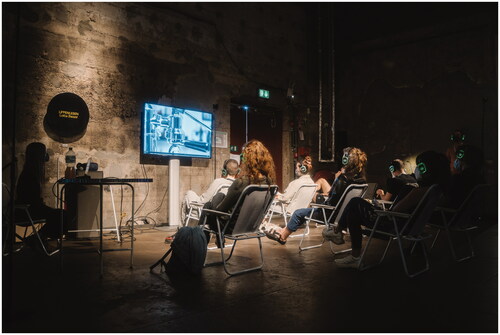
The hybrid format of the conference consisted of having on-site presentations and screened online keynotes, everything recorded and live-streamed on the website. It was a great solution for the international audience and invited speakers to attend and participate in the conference without having to travel. The pandemic and climate change-related issues reinforce this idea. Stanoeva expressed the desire of taking into account travelling for the speaker as a factor when deciding on the format for the presentation. She challenged the previous system in place asking ‘Does it make sense to travel eight hours by plane to deliver a one hour talk and attend the conference over two days and fly back for another eight hours the day after? Is it worth the speaker’s comfort and health? Is it worth it for the planet?’. The online format democratized by the pandemic has its benefits and also supports a more sustainable way to attend a conference. The residency part of the programme was a meaningful option to invite artists and makers from around the globe for a longer time to create opportunities to connect with the local communities and opportunities of the area. As an international conference speaker, I felt it was harder to connect with local visitors, even if on-site. It was probably due to the short-time on site, the language barrier and the social distancing.
As a visitor and a speaker, I felt energized by the space’s potential and the creativity generated. The staff were friendly and supportive. The curators and organizers of the conferences are curious minds, forward-seeking, and ready to take risks to go beyond the expected. Stanoeva was aware that it was a unique opportunity and that future events might be created with less funding or room for experimentations. The Zollverein Coking Plant became a place for wanders, for dreams, and for new grounds to be explored.
New cultural practices for a better future
Another End Is Possible was not like any traditional conference. The curators did not only organize the two days. They completely rethought how to curate and design a conference inducing a deeper change in its original format. During our exchange, Stanoeva empathized on the need for a stronger motivation to drive people in and catch their attention. Because of the pandemic, the number of events people could attend online increased drastically without them moving from their homes, leading to most emerging cultural places going unnoticed. They had to develop a new pattern in order to stand out. They opted for a less academic format - a more playful and experimental one. And it is not only about the format but also the content, offering a variety of visuals, sound performances, and speech formats. It was an interesting mix of abstracts ranging from more poetical works to more concrete ones, all embedded in societal, social, and ecological concerns. Stanoeva claimed ‘we do not only need facts’, and she is partially right. Indeed, mixing different perspectives, artistic mediums, research approaches, and creative methods on the same theme brought a richer experience and immersion to the audience. The design of the conference mirrored the whole festival’s organization and development. It was experimental from the start to the end.
NEW NOW festival is a good example of innovative curatorial practices for their ability to create a diverse and engaging programme.
First, they updated the conventional code of designing a conference and a festival by creating cultural richness and offering new formats, new expression and new dissemination. It must be acknowledged that the festival and conference were planned over long periods of time with enough funding to afford experimental formats of dissemination.
They gathered an international, global and interdisciplinary community of artists, researchers, makers, and creators, and helped to connect them to a local community of visitors. Their audience was diverse (international artists attending, and online access to the exhibition/conference available), and they took care to consider the locals. They had positive feedback and a surprised and curious audience on site. Even if the social distancing rules were in place, visits were steady but it affected the exchange between local visitors and international speakers.
They considered the issues of sustainability and offered a hybrid format as a way to bring the international scene to Europe efficiently. By playing with the physical space and the digital scene, they created a completely immersive experience for the public and support different media. As Stanoeva pointed out, it also means duplicating the preparation work time for it. It is also more complex to measure the success of the live-streaming of the conference and the online platform ZECHE.
The COVID-19 pandemic has shaken the cultural scene and the way we used to disseminate research. NEW NOW festival has shown us how to transform this into a promising opportunity. Like a blank page, a virgin land, they tested, took risks, and created a new way for us to see and experience artistic and creative projects. The ruins of the old world are to be seen as a beginning more than an end ().
Additional information
Notes on contributors
Noémie Soula
Noémie Soula is an interdisciplinary arts practitioner, interweaving life sciences, storytelling and design, and focussing on exploring alternative futuristic scenarios. Her research focuses on the future of the human body and the bioethical debates related to bodily or genetic modification. She joined Lab4Living as design research assistant in 2020.

